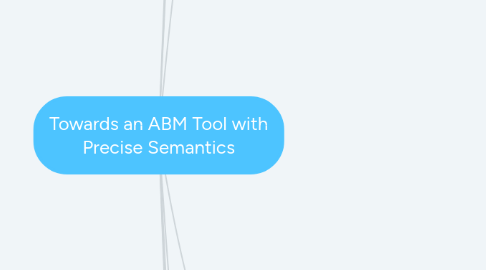
1. Introduction
1.1. Introduction
1.2. Motivation
1.3. Research questions
1.4. Methodology
1.5. Overview
2. Background
2.1. Language Engineering
2.2. ABM - MAS
2.3. Motivational example
3. Related work
3.1. Literature Study
4. Defining a precise semantics
4.1. Key elements of an agent based model
4.1.1. Agent
4.1.1.1. Behaviour
4.1.1.2. Communication
4.1.1.3. Actions
4.1.2. Environment
4.1.2.1. Physical environment
4.1.2.2. Communication environment
4.1.3. Schedule
4.1.3.1. Discrete event
4.1.3.2. Discrete time
4.2. Existing tools
4.2.1. NetLogo
4.2.2. Repast
4.2.3. TurtleKit
4.2.4. MASON
4.2.5. GAMA/GAML
4.2.6. SARL as basis for new platform
4.3. Existing (partial) formalisations
4.3.1. (partial) formal semantics
4.3.1.1. IR4MS
4.3.1.2. BDI
4.3.2. DEVS as a foundation
4.3.2.1. DEVS
4.3.2.2. DS-DEVS
4.3.2.3. Parallel DEVS
4.3.2.4. M-DEVS
4.3.2.5. LDEF
4.3.3. Discussion
4.4. SARL meta-model
4.4.1. Contexts and Spaces
4.4.1.1. Event Spaces
4.4.1.2. Holonic orginazation
4.4.2. Events
4.4.3. Agents and Behaviour
4.4.3.1. Reactive behaviour
4.4.3.2. Pro-active behaviour
4.4.3.3. Behaviour as first class abstraction
4.4.4. Capacities and Skills
4.5. Extending SARL meta-model
4.5.1. Scheduling
4.5.2. Re-implementing built-in capacities
4.5.3. Simulation entities
4.5.4. Virtual Clock
4.6. Proposed Precise semantics
4.6.1. Environment
4.6.1.1. Influences
4.6.1.1.1. Communication
4.6.1.1.2. Actions
4.6.1.2. State transitions over time
4.6.2. Agent
4.6.2.1. Behaviour
4.6.2.1.1. Reactive
4.6.2.1.2. Proactive
4.6.2.2. Beliefs/Internal state
4.6.3. Simulator pseudo-code
4.6.4. Discussion Extensibility
5. Tool Implementation
5.1. Design Goals
5.1.1. Precise Semantics
5.1.2. Reuse of SARL artifacts
5.1.3. Reuse of artifacts for deployment
5.1.4. Focus on Agent behaviour (decision making process)
5.1.5. Extendibility
5.2. Artifacts
5.2.1. AgentModel
5.2.2. EnvironmentSpace
5.2.2.1. Dynamic Population Environments
5.2.2.2. Built-In Environment Implementations
5.2.2.2.1. AbstractEnvironment
5.2.2.2.2. AbstractDynPopEnvironment
5.2.2.2.3. AbstractToroidal2DGrid
5.2.3. ModelContext
5.2.4. ModelInteractions
5.2.5. Simulator
5.2.6. Scheduler
5.3. Features
5.3.1. Influence Reaction
5.3.2. Dynamic Populations
5.3.3. Communication Through Environment
5.3.4. Explicit Decision Making Process
5.4. Examples
5.4.1. TrafficLight Operator
5.4.2. AgentSpawning
5.4.3. Ping Pong Agents
5.4.4. SimpleTraffic
6. TestCases
6.1. UnitTests
6.1.1. Spaces
6.1.2. ModelContext
6.1.3. ModelInteractions
6.1.4. Clock
6.1.5. Scheduler
6.1.6. Simulator
6.2. TraceTests
6.2.1. PingPongTest
6.2.2. SpawnAgentTest
6.2.3. TrafficLightOperator
6.2.4. SimpleTrafficExample
7. Demonstrative Example
7.1. Example
7.1.1. Goats
7.1.1.1. Communication
7.1.1.1.1. Procreation
7.1.1.1.2. Territorial Fighting of Rams
7.1.1.2. Complex Decision Making
7.1.1.2.1. Optimize Food intake
7.1.1.2.2. Find Suitable Partners
7.1.2. Environment
7.1.2.1. Limited Resources
7.1.2.2. Partial View
7.1.2.3. Spatial
7.2. Tools
7.2.1. NetLogo 6.0.4
7.2.2. Mason
7.2.3. SARLforSIM
7.2.4. GAMA/GAML?
